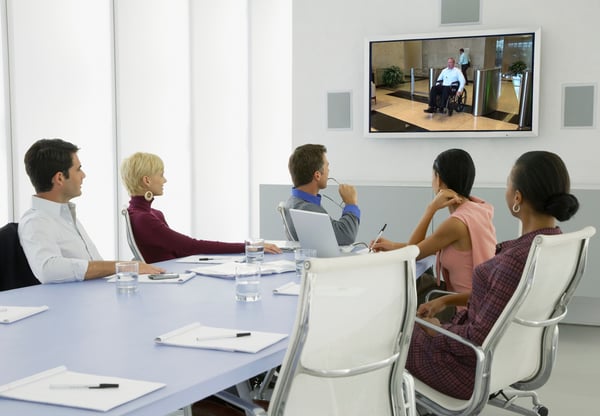Welcome to the ninth and final blog of our S.T.A.R.T.S.S. series. Our objective with this series has been to give guidance in considering all the most important factors when choosing new security entrances. By taking these factors into consideration, you can be assured that you will make the best choice to suit your organizational, business and security needs – and to deliver maximum ROI.
To see the entire S.T.A.R.T.S.S. series, click here.
When deciding what type of entrance to install at your facility, it’s most likely that you will give consideration to aesthetics and security. If you’ve followed our S.T.A.R.T.S.S. methodology, you’ve also thought about throughput, ROI, training and service. None of these important factors should be overlooked, as they all have a significant effect on how well your entrances will perform once they are installed.
Yet there is another key factor that strongly influences the success of your project and how well your new security entrances are adopted by your workforce.
That factor is culture.
The Values, Environment and Personality of Your Organization
Culture is a part of every other decision factor when selecting an entry solution. Before your installer or manufacturer makes their recommendations, they should consider and understand the values, environment and personality of your organization and personnel. They should ask questions such as:
- How significant is the change from current entrances to security entrances?
- Have employees used security entrances in the past?
- How do employees typically react to this type of change?
- What steps are planned to achieve buy-in from employees?
- When and how will you communicate upcoming changes?
- Are there any special needs among the personnel population? These may include older individuals, service animals, or disabled users.
- How involved in the decision process will employees be?
- Will all stakeholders (including the facility manager who will own the entrances once installed) be a part of the decision process?
Smooth the Transition with Employee Training
Training your personnel on how to use the new security entrances – both before and after the installation – is another important step you can take to smooth the transition. Because workplace security is such a big issue right now, it makes sense to discuss the new entrances in the context of helping to maintain a safer environment. They will prevent violent individuals from entering, decrease theft, and most of all, promote greater peace of mind during the workday. If you can help them take control of their own safety in a responsible way, you have achieved much more than just a compliant workforce.
By communicating early and often with your personnel, you can alleviate a great deal of the anxiety and concern that surrounds a significant change in the work environment. Consider your employees; what type of communications do they respond best to? A few suggestions to educate staff on the benefits of the new entrances include:
Typically, you would communicate a general message 2-3 months in advance and then provide more specific information (for example, impacts to fire egress, using certain entrances during construction) closer to the installation date.
Meetings
Schedule group meetings to announce the rationale for increased security, statistics on crime, the new security changes that are coming, show any drawings/photos of the new door/turnstiles and show the orientation videos available from the manufacturer. These meetings are an excellent way to directly field questions and address user concerns.

Security “Fair”
If you are implementing a lot of new changes, such as a new access control system, new guard service and security entrances, you might consider hosting a “security fair” on a given day and have the different vendors come for a day with tabletop displays to meet employees and answer questions during their lunch. This could be a great way to break the ice in a large organization.
Orientation Videos
Make user orientation videos (provided by the manufacturer) available in several ways, for example:
- Intranet Site
- Monitors in public areas—lounges, cafeteria, hallways, etc.
- Send to all staff as email attachments

Ambassadors
Immediately after installation, once the doors or turnstiles are operational, train “ambassadors” on how to use the door/turnstile. Have these people monitor and assist employees during peak traffic times. If you have thousands of employees, consider dividing them into groups and introduce the new entrance to one group at a time (Group A on Monday, Group B on Tuesday, etc.).
Reminder Posters
Place user education “quick steps” posters next to the door/turnstiles for a few weeks to help employees remember the basic steps and guidelines, e.g., “stand in front of the turnstile, swipe badge, wait for green light, proceed.” Ask your manufacturer to provide these or artwork.
While there are always going to be people who are resistant to change, by communicating clearly and openly with your population you can greatly facilitate adoption and satisfaction. Your responsiveness to any issues and complaints that arise during and after the implementation is equally fundamental to the ultimate success of the installation.
We have seen thousands of successful deployments of security entrances – and in every situation, a thorough understanding of the culture, paired with good communication between management and personnel, made for the most effective transition.
Putting It All Together
We hope you enjoyed the entire S.T.A.R.T.S.S. series. As always, please reach out to us with any questions you may have. We love talking with our community!
Fun fact: you might have noticed that the name of our methodology – “S.T.A.R.T.S.S.” – is an acronym for the topics covered in blogs 2-8. They are:
- Security
- Throughput
- Aesthetics
- ROI
- Training
- Service
- Safety
The topic of this blog is Culture, and it does not have its own letter in the acronym. Why is that? Was it added later, or is it less important than the others? The answer to both questions is no.
We’d love to tell you that there is a brilliant strategy behind this odd fact, but the truth is, “STARTSSC” just looks strange. You can’t really pronounce it. And we didn’t like any of the other options (SCARTTSS? CRATTSSS?)
So when all was said and done we decided to leave “Culture” as a plus-one; something extra to give our readers just a bit more value. If you’re familiar with the New Orleans expression “lagniappe”, that’s what this blog represents.



